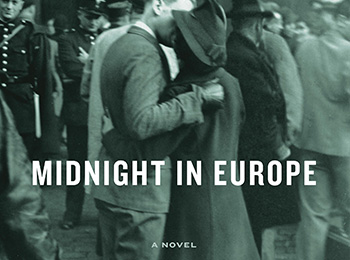Midnight in Europe
Alan Furst
(Random House, New York, 2014)
The severe political extremisms of Europe in the last century and their wretchedly cruel aftermaths are now mostly stories told by grandparents to their grandchildren. The words Fascist, Nazi, Bolshevik and Stalinist are primarily invectives hurled sanctimoniously by one set of privileged college students at another set of privilege college students. But among individuals born after Neil Armstrong walked on the moon, the full meanings of those words pack very little, if any, of the frightful nightmare they imposed upon so much of humanity some 80 years ago.
The American writer Alan Furst has reminded us of that dark and dreaded time in Europe through his outstanding body of historical spy novels published over the past 20 years.
Furst skillfully focuses his writing on life in Europe in pre-and early World War II. Each work is a masterpiece of heart-racing plot, complex character development and above all, consummate re-creation of the foreboding atmosphere of the times. Midnight in Europe is his 13th such work and it is entirely true to the mesmerizing form of the works that have preceded it.
The protagonist of Midnight in Europe is a Spanish-born lawyer, Cristian Ferrar, who lives in Paris and works for an international law firm. Of course, Furst creates a variety of other colourful and important characters in the unfolding of the story, but Ferrar is the key dramatic pivot. It is 1938 and the Fascist forces of the Franco-led Monarchists have worn down the Republican side in the brutal Spanish Civil War. Defeat for the Republicans is imminent. Nevertheless, Ferrar is recruited to try to help stave off that defeat.
The Spanish Civil War is the historic background for the story. As in his other novels, Furst embroils good, decent men and women in a struggle against ruthless oppressors. Almost immediately in Midnight in Europe, Furst foreshadows the menace that hovers across Europe and that has started its march, eerily and orc-like, towards the rest of civil, democratic society.
“Ferrar would ask himself, Is there anything to be done? Is it hopeless? So it seemed. The democratic opposition to the dictators tried not to show fear, but it was in their every word, the nervous dithering of the losing side. As Franco and his generals attacked the elected Republic, the others joined in, troops and warplanes provided by Germany and Italy, and with every victory, they boasted and bragged and strutted: It’s our turn, get out of our way. Or else.”
Ferrar refuses to get out of the way.
Like all of the main characters in Furst’s works, Ferrar is not a super spy trained to kill, or a glory-seeking adventurist out to settle accounts or to score a headline. He is a man with a conscience whom we might encounter every day. He is fearful for his society, for his family and certainly also for himself. In Midnight in Europe, the “hero” is a lawyer. In other of his works, the hero has been, for example, a foreign correspondent, a producer of films, a mapmaker or a defector from the Soviet intelligence service. “These are characters in novels,” Furst writes, “but people like them were courageous people with ordinary lives and, when the moment came, they acted with bravery and determination. I simply make it possible for them to tell their stories.”
And their stories are indeed captivating.
The page-turning plot holds the reader to the very end, but equally compelling is the richness of all manner of detail that Furst writes into the story. He describes locales in Midnight in Europe with profound artistic precision. Whether a seedy, smoke-filled brasserie in Paris, a dangerous, dimly-lit alleyway in Berlin, or an ominous, fog-laden dock in Odessa, Furst places us there with almost hypnotically transformative effect. We see and feel and smell and sense the Europe of the 1930s and 1940s as if we were there.
Furst directs his characters’ movements through layer upon layer of historical detail. His admirers have often noted that Furst writes historical fiction as much as he does spy fiction.
In writing about events that have already taken place, Furst uses the advancing chronology of the calendar like a pounding drumbeat in an adventure movie. It stirs our blood. The pages falling away from the calendar, the forward march of time, threaten to overtake the protagonists. The reader is aware of approaching disaster; the protagonists are not. That they cannot change history, yet try to, provides the moral gravity of the story. The failure of Ferrar to stop the march of the oppressors does not mean that the march was unstoppable. Indeed over and over again, Furst makes the very opposite point. Furst rails against what he has described in other works as “the cowardly silence of European statesmen” that ignored what was so entirely obvious to them.
After Ferrar returns from a trip to Berlin, he observes of the society that the Nazis had created in Germany that, “Evil was the only word for it, and Ferrar now knew it would not cure itself, as most of the world had hoped.”
Furst’s observation has been proven too many times since World War II: in Cambodia, Rwanda, Kosovo and Sudan, more recently in Ukraine, Syria, Nigeria and Iraq and in the calculated, cynical, craven launching of rockets and missiles at the people of Israel from launch pads adjacent to hospitals, schools, mosques or UNRWA shelters in Gaza.
Furst teaches that each of us must make a stand. When evil enters the playing field, the sidelines offer no protection.
Midnight in Europe must be read.
